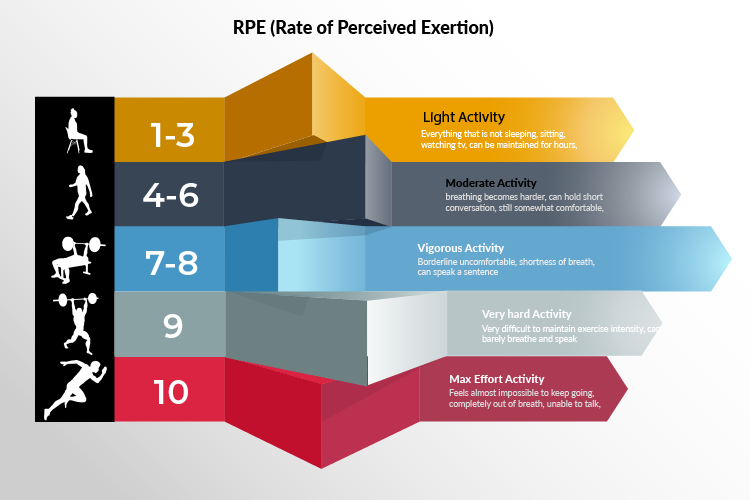RPE- What is it anyway?
What is RPE in strength training
1. Introduction
RPE stands for “rate of perceived exertion”. In other words: How strenuous do you find your training?
It is a subjective measurement that helps you to better plan and control your training. After all, strength training is not about doing as many repetitions as possible or lifting as much weight as possible. It’s much more important that you perform the exercise in such a way that you actually reach “muscle failure” at the end of your sets – i.e. you can’t do any more repetitions.
Now if you always push the limit and always train to muscle failure, you will soon overexert yourself and injure yourself. A good way to avoid this is to plan your training around RPEs.
2. What is RPE?
Some of you may already be familiar with the term RPE (Rate of Perceived Exertion), but for others it is new. In short, RPE is the subjective assessment of your effort during a workout. Most of us are used to planning and performing our workouts based on the number of reps or sets, but RPE offers a far more flexible and individualised approach.
RPE is based on a scale of 1 to 10, with 1 being the least effort and 10 being the most effort. To find out which value you should set for yourself, you just have to experiment and trust your gut. However, you should keep in mind that RPE is very subjective and what seems like an 8 to you may already be a 10 to someone else. So there is no “right” or “wrong” value – it always depends on you!
You can apply RPE to any type of training, whether it is endurance or strength training. A popular example is Time Under Tension (TUT) training, where you increase the duration of your repetitions and thus stimulate more muscle fibres, resulting in greater gains. TUT training is most effective when performed with high repetitions (12-20) and short rests (30-60 seconds). To find out how hard you should train, you can use the TUT formula:
Number of repetitions x duration of repetition (in seconds) / 60 = TUT
For example: 12 repetitions of 4 seconds each = 48 seconds / 60 = 0.8 TUT
This corresponds roughly to an RPE of 7 to 8.
3. How is it calculated?
Usually the RPE is given on a scale of 0 to 10, where 0 corresponds to no effort and 10 corresponds to maximum effort. To calculate the RPE for a particular exercise or series, multiply the number of repetitions you could still have done by a factor of 10 and divide this by the actual number of repetitions completed. For example, you do 8 repetitions of a maximum difficulty exercise. 8 x 10 = 80. However, the actual number of repetitions you completed was only 12. 80/12 = 6.6. This is your RPE for that exercise or series.
4. Advantages of RPE in strength training
RPE is a valuable tool to guide and regulate strength training. The benefits of RPE in strength training are many and can greatly improve training success. RPE allows the trainer to precisely control the intensity of the training and ensure that the exercises are appropriate for the individual. In addition, RPE can help minimise the risk of injury as it allows the trainer to precisely regulate the load on the joints and muscles.
5. Disadvantages of RPE in strength training
One disadvantage of RPE in strength training is that it can be difficult to find the right level of intensity. Too much intensity can lead to injury, while too little intensity will not deliver results. It is a balancing act to find the right point.
Another disadvantage of RPE is that it is subjective. That is, what may be a ‘heavier’ weight for one person may be lighter for someone else. This can lead to people either overdoing or underdoing their current level of training.
Conclusion
RPE is an important factor in strength training and should not be ignored. RPE puts you in control of your training and allows you to improve your performance and prevent injury. So next time, make sure to include RPE in your training.

